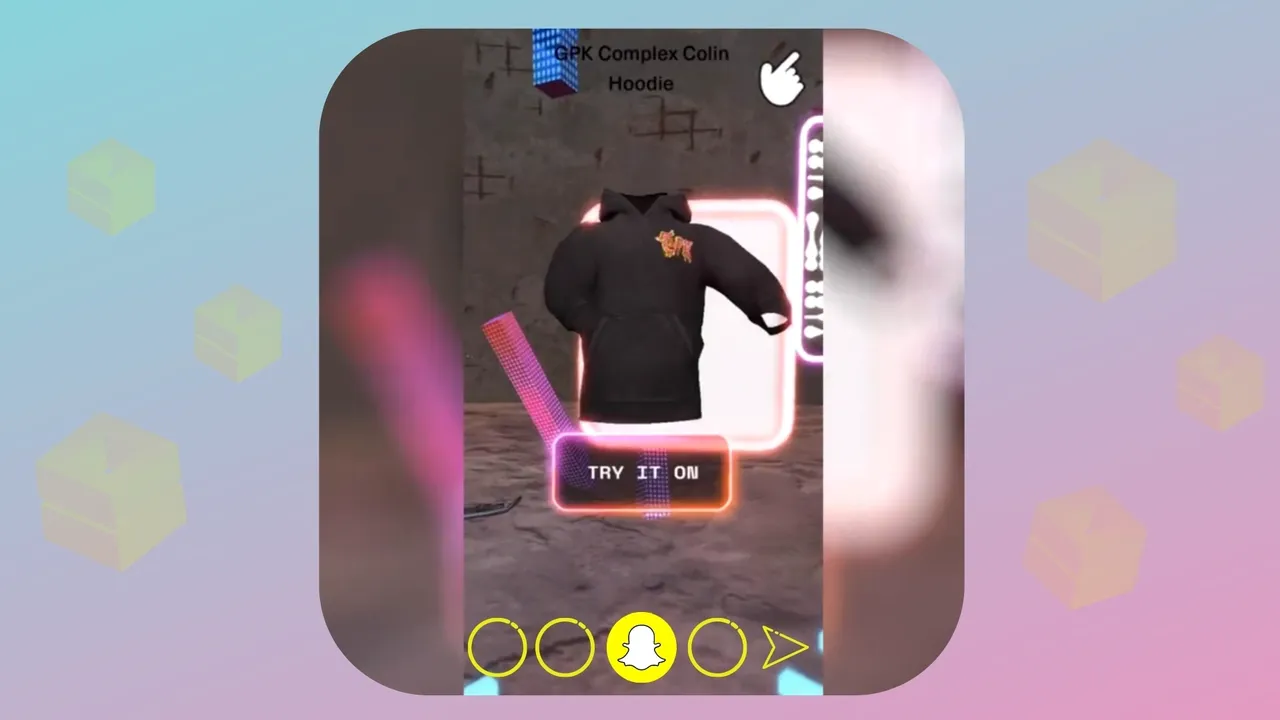Snapchat has a new showcase of it’s evolving AR Try-On tools, along with a new integration in lieu of ComplexCon. Additions to the AR Try-Ons will enable users to virtually fit branded apparel to see how they would look like in the app.
As you can see from this official Tweet, AR Try-Ons seemingly take the live-shopping experience to the next level by using AR technology to essentially ‘transport’ users to digital stores where they would be able to choose to try on clothing as they would in real-life. Though it’s still far from being perfect – with digital overlays sometimes looking ‘puffy’ and disproportionate – it at least highlights Snap’s rising advances in AR, particularly body-mapping, that enables it to better integrate different eCommerce options.
Digital Fitting
Snapchat already offers a range of AR Try-On options for ad campaigns, including fashion accessories, jewelry, shoes, and other similar items. It’s worth noting that Snapchat has long since been developing its AR wearables project. Just back in May, Snap collaborated with mega fashion brands Prada and Fartech on a number of Try-On projects, including a limited range of upper body clothing.
Snap’s acquisition of FitAnalytics in March provided them with the additional tools needed so as to facilitate more accurate product matches, while simultaneously collecting customer preference data. These developments, combined, have greatly contributed to Snap’s innovation on its AR overlays, allowing it to go toe-to-toe with bigger tech players including the likes of both Apple and Facebook, which will definitely allow it to see a bigger part during the next stage of eCommerce.
While eCommerce trends are expected to slightly dip come 2022, with physical stores and malls re-opening, online shopping is expected to continue growing. Oberlo even released a chart which shows a steady rise of eCommerce sales even before the COVID surge. While this trend will likely recede from high peaks in 2022, it’s believed that online product sales will even out at a rate that’s significantly higher than what they achieved back in 2019.
To add, the shift is more beneficial to younger consumers since they’ve developed somewhat of an affinity towards discovering and purchasing products online. Likewise, advances in live-stream shopping has also made it easier to look for and grab exclusive product deals and offers.
A good example here is a rare pair of sneakers once worn by NBA player Tyrese Haliburton that touted the design which made use of his bored ape, an NFT he bought online. One unique element of NFTs is that they are stored on blockchains and are accessible to the public, meaning that people can search up each individual piece of the ‘Bored Apes’ artworks and see exactly who owns them.
The Wrap
It’ll be interesting to observe how this trend will develop, considering that competition is now slowly learning to adopt newer online functionalities and economic formats. What Snapchat underlines in its development of its AR technology is the imminent merging of the online and offline worlds, potentially opening up a number of new marketing opportunities and tie-ins.
To add, both Google and Apple have new contracts with Snapchat that’ll surely give it the backing that it needs so as to be able to improve on the key elements of its AR tools.
Subscribe to our ‘Bottoms Up!’ Newsletter. Get the latest social media news, strategies, updates and trends to take your business to the highest level.
Sources

